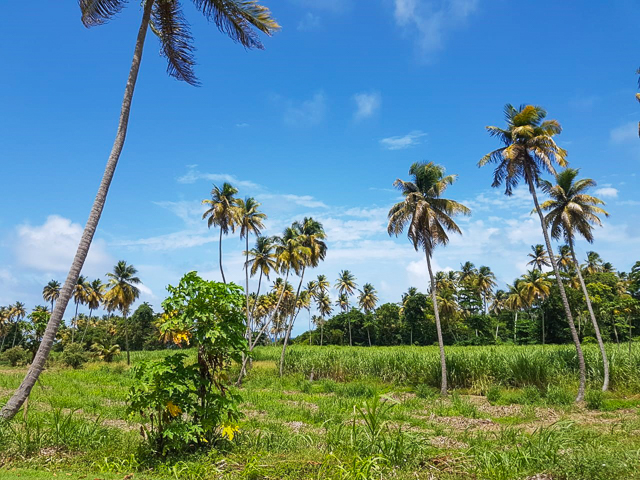Agricultural Lands in Real Estate in Grenada

As the real estate industry is impacted by the current crisis, and with other sectors of the economy continuing to struggle, several people are starting to pay attention to sustainability, diversity, food security and products we can export. We can all point fingers at who is responsible and what should have been done in the past to boost agriculture, but ‘Hindsight is 20/20’. This simply means that it's easy to know the right thing to do after something has happened. This blog post is not to put blame on anyone; frankly, we should aim to move forward by developing proper plans and solutions.
In this post, I’ll do a quick overview of agricultural land in the real estate industry in Grenada – it’s availability (supply and demand), price and trends, characteristics that can make some agricultural lands more valuable than others, factors that can increase the value of agricultural lands, and a starting guide to comparing agricultural lots.
Growing up, and still to this day, I saw many people shun agriculture with some unfortunately seeing it as a poor man’s industry. But for many others, agriculture is a way of life that has brought riches, when done right.
With many people moving away from agriculture, a lot of the lands in Grenada have been left unattended and overgrown. Don’t get me wrong, there are several people who stayed in the agricultural land sector and we have seen some young and new entrants to the sector. In the real estate market there has been a constant list of agricultural lands for sale (supply), and that supply available for sale on the market has always exceeded demand. Over the last three years, 2017, 2018, 2019, there has been an increase in demand, mainly due to one international investor on island, but the local demand remained more or less constant. Given the lower demand in comparison to constant supply, agricultural land prices per square foot (sq.ft) have remained lower than other real estate land categories. This is also related to lower rate of return on agricultural lands in comparison to other land types. In Grenada, agricultural land prices per square foot sold in 2018 and 2019 were between EC $0.40 and EC $2.50 (this is the general range, but there are some outliers above the higher range). This price per square foot is significantly lower than the price per square foot for residential and commercial lands. However, it should be noted that in several instances agricultural lots sold are significantly larger than other land types sold. A residential lot is normally in the range of 10,000 sq.ft to 24,000 sq.ft. whereas agricultural lots are normally over 43,000 sq.ft. There are some economies of scale in buying agricultural land because the considerable size reduces the price per sq.ft. but the fact remains that the price is lower than other land categories.
Now given our current crisis with the pandemic, I hear more and more people talking about getting into agriculture and I do believe that there is a need for more to be done in the sector. Within the last three weeks I've received calls from several land owners asking if I think their values for agricultural lands have increased or will increase. Since my opinion of value is dependent on several factors of the actual land and the market, I unfortunately do not have a direct yes or no answer. If you are interested in making a better value opinion about agricultural lands, as well as what to expect in the value trend and how to compare these lands, here are some important factors to consider. (It should be noted the type of agricultural use is of significant importance here).
Land Characteristics:
· Access to an efficient water supply for irrigation
· Weather conditions suitable for the agricultural use
· Topography – it’s a general rule to avoid land with steep hills because water can wash away necessary nutrients. Steep or rugged terrain can also affect maximum use of the land.
· Soil type – the soil should have the right nutrients and acidity to grow your preferred crops.
· Available infrastructure – accessibility to accommodate transportation and land preparation, electricity, buildings for storage and other purposes
· Property zoning guidelines
Other things to consider beyond the features of the land:
- Current supply on the real estate market for that specific use of land
- Current demand or potential demand on the real estate market for that specific use of land
- Access to financing for agricultural purposes
- Demand and supply market for products
- Assistance from government and other organizations
- Regulations and protection for the use of the land
- Access to advanced agricultural technologies
- Access to complementary products such as seeds, fertilizer, etc.
With regard to the values and the preferences for agricultural land, there are other factors to consider, but the above lists are great starting points as you compare the potential value of agricultural lots to find the right one for your specific use.
In conclusion, I believe that there will be an increase in demand for more agricultural lands with specific characteristics and for particular uses in specific locations. This demand will therefore be the force that increases the value. The question, then, is by how much will the value increase?




